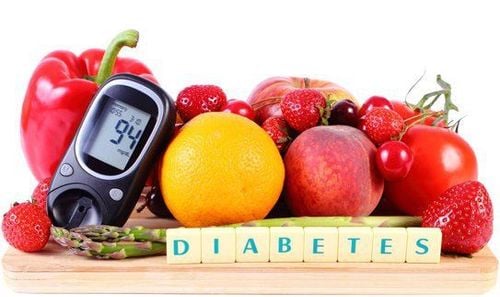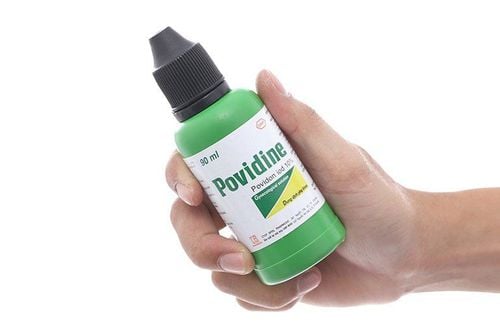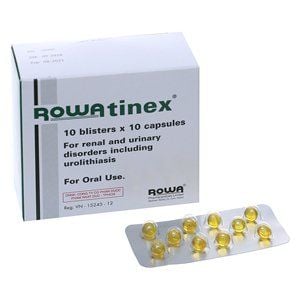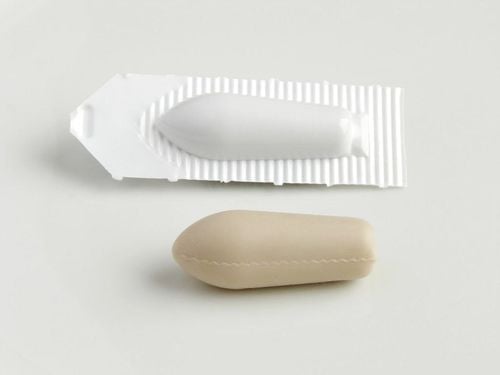1. What is Mixtard 30 and its composition?
Mixtard 30 is a medication used to treat diabetes. The composition of Mixtard 30 includes:
- Human insulin (30% soluble insulin and 70% isophane insulin), rDNA (produced by recombinant DNA technology in Saccharomyces cerevisiae cells).
- Additionally, there are other excipients in a sufficient quantity to make 10ml.
- Pharmaceutical form: Mixtard 30 is formulated as an injectable suspension.
- Drug class: This drug belongs to the group of medications used to treat diabetes.
2. Effects of Mixtard 30
2.1 Indications for the use of Mixtard 30
- Treatment of type 1 diabetes (insulin-dependent diabetes).
- Treatment of type 2 diabetes when treatment with oral antidiabetic agents is no longer effective.
- Stabilization of early diabetes and especially for emergency cases of diabetes.
- Underweight, malnourished children with vomiting and impaired glucose metabolism (often given glucose infusion in combination with insulin).
- Induction of insulin shock to treat mental illness (creating a sudden and severe hypoglycemic episode).
2.2 Pharmacodynamics of Mixtard 30
Mixtard 30 is used in the treatment of diabetes. Insulin and insulin analogs, injectable, intermediate-acting combined with rapid-acting, human insulin.
The effect of Mixtard 30 in reducing blood glucose is due to facilitating glucose uptake after insulin binds to receptors on muscle and fat cells, and simultaneously inhibiting the production of glucose from the liver.
2.3. Pharmacokinetics of Mixtard 30
- Mixtard is a combination insulin product. It begins to act within 30 minutes, reaches peak effect in 2-8 hours, and has a duration of action of up to 24 hours.
- Absorption: Peak plasma concentrations of the rapid-acting insulin component are reached within 1.5-2.5 hours after subcutaneous administration.
- Distribution: Does not bind strongly to plasma proteins, except for circulating insulin antibodies (if present).
- Metabolism: Human insulin is reported to be degraded by insulin protease or insulin-degrading enzymes and possibly by protein disulfide isomerase.
- Elimination: The terminal half-life is determined by the rate of absorption from the subcutaneous tissue. Therefore, the terminal half-life 1 (t1/2) is considered a measure of absorption rather than the rate of elimination of insulin from plasma (insulin in the blood has a t1/2 of a few minutes). Studies have shown a terminal half-life of about 5-10 hours.
2.4. Effects of Mixtard 30
- On carbohydrate metabolism: Mixtard 30, with its main component insulin, lowers blood glucose levels by facilitating glucose uptake into cells, especially liver, muscle, and adipose tissue cells.
- On lipid metabolism: Increases the synthesis and storage of lipids in the liver, inhibits lipid breakdown, and suppresses the formation of ketone bodies by inhibiting the activity of hormone-sensitive lipase, reducing the levels of free fatty acids and glycerol in the plasma.
- On protein metabolism: Promotes protein anabolism by facilitating the entry of amino acids into cells for protein synthesis. Particularly in the vascular wall, insulin is involved in the formation of structural glycoproteins; therefore, insulin deficiency leads to a fragile vascular wall.
3. Side Effects of Mixtard 30
Hypoglycemia is a common side effect of Mixtard 30 or insulin treatment. Symptoms of hypoglycemia often occur suddenly and may include:
- Sweating
- Pale and cold skin
- Restlessness, tremor, anxiety, unusual tiredness
- Mental disturbances such as confusion, difficulty concentrating, drowsiness, and severe hunger
- Temporary blurred vision
- Headache, nausea, palpitations, and heart pounding
- Severe hypoglycemia can lead to unconsciousness, and may cause permanent brain damage or even death.
When starting insulin therapy, fluid retention and visual disturbances may occur. When treated with Mixtard 30, these side effects are usually temporary and disappear quickly.
Other side effects that may occur with Mixtard 30 treatment include:
- Local hypersensitivity reactions such as redness, warmth, swelling, and itching at the injection site.
- Systemic hypersensitivity reactions such as generalized rash, itching, sweating, gastrointestinal disturbances, angioedema, difficulty breathing, palpitations, and hypotension.
- Lipodystrophy may occur at the injection site due to failure to change the injection site or injecting the same site for many days.
4. How to use and dosage of Mixtard 30
4.1. How to use Mixtard 30
Mixtard 30 is administered by subcutaneous injection. The insulin suspension should never be given intravenously. When injecting Mixtard 30, please pay attention to the following points:
- Mixtard is injected subcutaneously into the thigh, abdomen, buttocks, or upper arm.
- Subcutaneous injection into the abdomen ensures faster absorption compared to other injection sites.
- Pinch a fold of skin when injecting to reduce the risk of unintended intramuscular injection. Hold the needle in place for at least 6 seconds to ensure that the entire dose of insulin has been injected.
- Rotate injection sites within the same injection area to reduce the risk of lipodystrophy.
- Mixtard is packaged with a detailed user manual that you should follow.
- As a precaution, always carry a spare insulin pen in case your FlexPen is lost or damaged.
4.2. Dosage of Mixtard 30
- Mixtard 30 is a combination insulin product. It is a mixture of fast-acting insulin and intermediate-acting insulin. Premixed insulin products are typically used once or twice daily when a rapid onset of action is needed, along with a longer duration of action.
- The dosage will vary from person to person and will be determined based on individual needs. The average insulin requirement is between 0.3 and 1.0 IU/kg/day. Daily insulin requirements may be higher in insulin-resistant individuals (e.g., during puberty or in obese individuals) and lower in individuals who produce excess endogenous insulin. It is important to note that you should have a main meal or snack containing carbohydrates within 30 minutes after each injection.
Note on dosing: The above dosage is for reference only. The specific dosage will depend on the individual's physical condition and the severity of the disease. For the appropriate dosage, please consult your doctor or healthcare professional.
4.3. Overdose/Missed Dose
In case of overdose: Hypoglycemia can develop in successive stages if a dose too high for the patient's insulin requirement is used:
- Mild hypoglycemia: The doctor may prescribe treatment with oral glucose or sugary products. Therefore, people with diabetes are advised to always carry sugary products.
- Severe hypoglycemia: In case of unconsciousness, the doctor may prescribe treatment with glucagon (0.5 - 1 mg) intramuscular or subcutaneous injection by a person who has been instructed on how to inject the drug or intravenous glucose administration by a healthcare professional. Intravenous glucose must be used if there is no response to glucagon within 10-15 minutes. When awake, give food containing carbohydrates to prevent recurrence.
In case of a missed dose: If you forget a dose of Mixtard 30, take it as soon as possible. However, if the time of the missed dose is close to the next dose, skip the missed dose and take the next dose at the scheduled time. Note that you should never take a double dose.
5. Drug Interactions of Mixtard 30
Certain medications can interact with glucose metabolism. The following substances may decrease a person's insulin requirement:
- Oral antidiabetic drugs;
- Monoamine oxidase inhibitors (MAOIs);
- Non-selective beta-blockers;
- Angiotensin-converting enzyme (ACE) inhibitors, salicylates, anabolic steroids, and sulfonamides.
The following substances may increase a person's insulin requirement:
- Oral contraceptives, thiazides, glucocorticoids, thyroid hormones, sympathomimetics, growth hormone, and danazol.
- Beta-blockers can mask the symptoms of hypoglycemia and delay recovery from hypoglycemia.
- Lanreotide can increase or decrease the need for insulin.
- Alcohol can increase or decrease the need for insulin.
6. Important Considerations When Using Mixtard 30
Before using Mixtard 30, please carefully read the instructions for use and refer to the information below.
6.1. Contraindications for Mixtard 30
Mixtard 30
Mixtard 30 is contraindicated in the following cases:
- Hypersensitivity or allergy to the active substance or to any of the excipients.
- People with hypoglycemia.
6.2. Precautions for using Mixtard 30
- Switching from animal-source insulin to recombinant insulin may necessitate adjustments to the treatment dose due to differing responses in the body. Typically, your healthcare provider will reduce the dosage in such cases.
- Insufficient or inconsistent dosing, especially in type 1 diabetes, can lead to hyperglycemia (high blood sugar).
- In type 1 diabetes, untreated hyperglycemia can eventually lead to diabetic ketoacidosis, a potentially fatal condition.
- Ability to drive and operate machinery: The ability to concentrate and react may be impaired as a result of hypoglycemia (low blood sugar). This can pose a risk when driving or operating machinery.
Use with caution in patients with Cushing's syndrome, hyperthyroidism, or pheochromocytoma. - Pregnancy: There are no restrictions on the treatment of diabetes during pregnancy, as insulin, being a protein, does not cross the placental barrier. Enhanced blood glucose control and monitoring are recommended for pregnant women with diabetes throughout pregnancy and when planning pregnancy. Insulin requirements typically decrease during the first trimester and increase gradually during the second and third trimesters.
- After childbirth, insulin requirements quickly return to pre-pregnancy levels.
- Breastfeeding: There are no restrictions on the use of this medication during breastfeeding. Insulin treatment for breastfeeding mothers poses no risk to the infant. However, your doctor may need to adjust your dose, daily diet, or both.
Mixtard 30 contains the active ingredient Insulin human (rDNA) 30mg and is used to treat diabetes. To ensure effective use, patients should read the instructions carefully or consult with a doctor or pharmacist.
Please dial HOTLINE for more information or register for an appointment HERE. Download MyVinmec app to make appointments faster and to manage your bookings easily.
To arrange an appointment, please call HOTLINE or make your reservation directly HERE. You may also download the MyVinmec app to schedule appointments faster and manage your reservations more conveniently.








